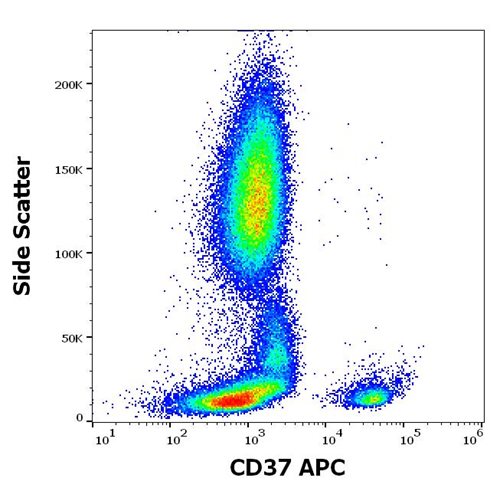Recombinant Human SIRPa Protein, mFc Tag
Shipping Info:
For estimated delivery dates, please contact us at [email protected]
| Amount : | 50 µg |
| Content : | Lyophilized from sterile PBS, pH 7.4. Normally 5 % - 8% trehalose is added as protectants before lyophilization. |
| Storage condition : | Store at -20°C to -80°C for 12 months in lyophilized form. After reconstitution, if not intended for use within a month, aliquot and store at -80°C (Avoid repeated freezing and thawing). Lyophilized proteins are shipped at ambient temperature. |
| Uniprot ID : | P78324 |
| Alternative Name : | SHPS1, SIRPA, CD172A, BIT, MFR, MYD1, P84, PTPNS |
Molecular Characterization: SIRPa(Glu31-Tyr373) mFc(Pro99-Lys330)
Molecular weight: The protein has a predicted molecular mass of 63.8 kDa after removal of the signal peptide.The apparent molecular mass of SIRPa-mFc is approximately 70-100 kDa due to glycosylation.
Description: Recombinant Human SIRPa with C-terminal mouse Fc tag
Tyrosine-protein phosphatase non-receptor type substrate 1 (SHPS1) is also known as CD172 antigen-like family member A (CD172a), Macrophage fusion receptor, MyD-1 antigen, Signal-regulatory protein alpha (SIRPA or SIRP alpha) or p84, is a member of the SIRP family, and also belongs to the immunoglobulin superfamily. SIRP alpha is Ubiquitous and highly expressed in brain. SIRPA / CD172a is immunoglobulin-like cell surface receptor for CD47 and acts as docking protein and induces translocation of PTPN6, PTPN11 and other binding partners from the cytosol to the plasma membrane. SIRPA / SHPS-1 supports adhesion of cerebellar neurons, neurite outgrowth and glial cell attachment and may play a key role in intracellular signaling during synaptogenesis and in synaptic function By similarity. SIRPA / MyD1 involved in the negative regulation of receptor tyrosine kinase-coupled cellular responses induced by cell adhesion, growth factors or insulin and mediates negative regulation of phagocytosis, mast cell activation and dendritic cell activation. CD47 binding prevents maturation of immature dendritic cells and inhibits cytokine production by mature dendritic cells.
Molecular weight: The protein has a predicted molecular mass of 63.8 kDa after removal of the signal peptide.The apparent molecular mass of SIRPa-mFc is approximately 70-100 kDa due to glycosylation.
Description: Recombinant Human SIRPa with C-terminal mouse Fc tag
Tyrosine-protein phosphatase non-receptor type substrate 1 (SHPS1) is also known as CD172 antigen-like family member A (CD172a), Macrophage fusion receptor, MyD-1 antigen, Signal-regulatory protein alpha (SIRPA or SIRP alpha) or p84, is a member of the SIRP family, and also belongs to the immunoglobulin superfamily. SIRP alpha is Ubiquitous and highly expressed in brain. SIRPA / CD172a is immunoglobulin-like cell surface receptor for CD47 and acts as docking protein and induces translocation of PTPN6, PTPN11 and other binding partners from the cytosol to the plasma membrane. SIRPA / SHPS-1 supports adhesion of cerebellar neurons, neurite outgrowth and glial cell attachment and may play a key role in intracellular signaling during synaptogenesis and in synaptic function By similarity. SIRPA / MyD1 involved in the negative regulation of receptor tyrosine kinase-coupled cellular responses induced by cell adhesion, growth factors or insulin and mediates negative regulation of phagocytosis, mast cell activation and dendritic cell activation. CD47 binding prevents maturation of immature dendritic cells and inhibits cytokine production by mature dendritic cells.
|
There are currently no product reviews
|























.png)









